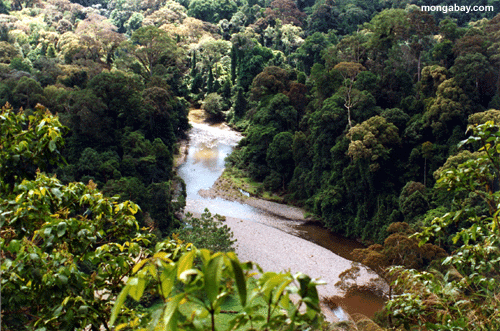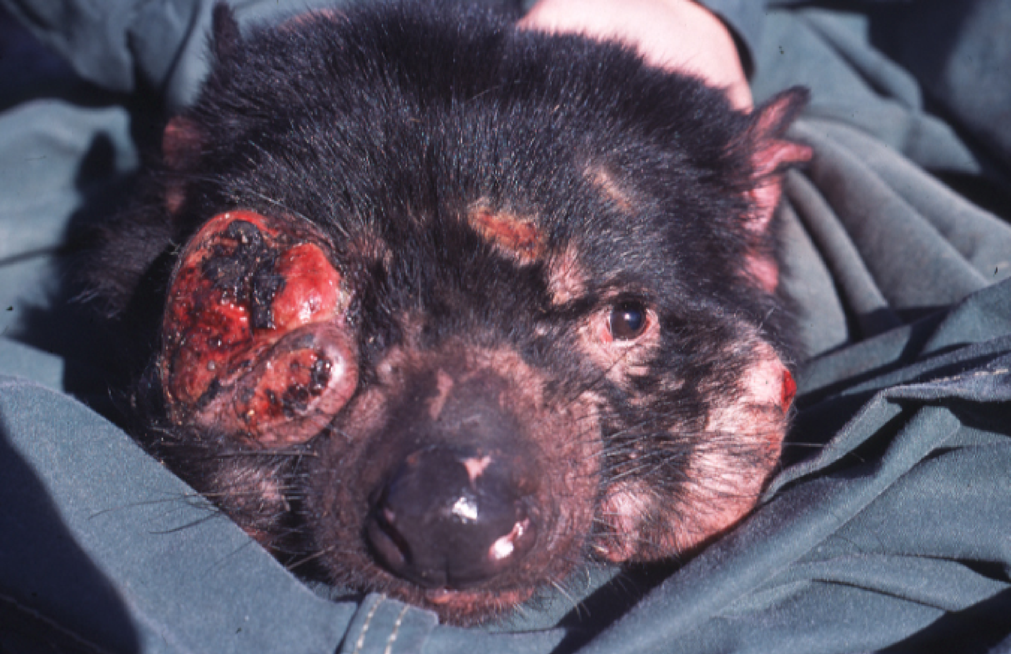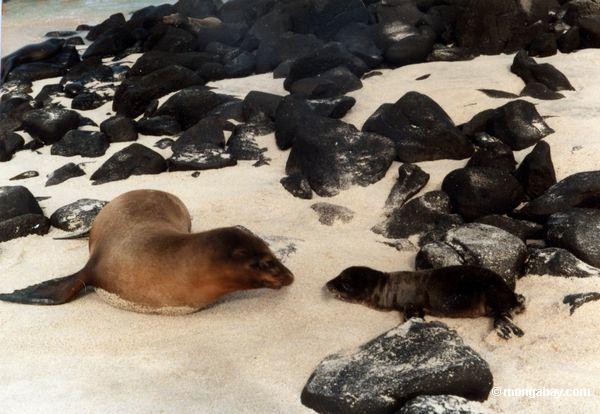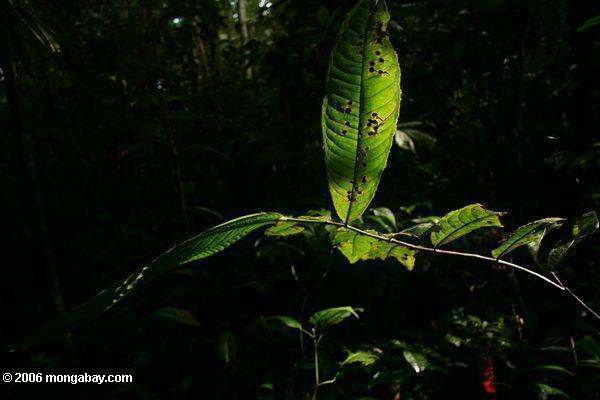NY Time’s article on the true cost of eating meat
Mark Bittman, of the popular How to Cook Everything books, has written an excellent article on the environmental costs of eating meat, especially in the amounts that the average American consumes. Oh, and he’s not a vegetarian. http://www.nytimes.com/2008/01/27/weekinreview/27bittman.html?_r=1&ref=science&oref=slogin Some excerpts: “Americans eat about the same amount of meat as we have for some time, about eight...
Mainstream media still ignores global warming
It seems everyday there are more studies and reports coming out on the impacts of climate change–now and in the future (at mongabay we see A LOT of them). Yet, rarely do these studies make it to mainstream new sources. Either, the media is still run by science-skeptics or the newspapers, news shows, and online media sources actually believe that Brittany Spears’ latest cry for help, Clinton’s (take your pick:...
NY Times Article on Europe’s Hunger for Illegal Fish
Yesterday the New York Times printed an enlightening article on the massive illegal seafood trade in Europe. It may be time for a moratorium on eating seafood altogether… The article can be accessed here: http://www.nytimes.com/2008/01/15/world/europe/15fish.html?scp=2&sq=fish+europe An excerpt (by Elizabeth Rosenthal): “Fish is now the most traded animal commodity on the planet, with about 100 million tons of wild...
Non-Violence and Environmental Action
Currently, in the Antarctic seas, Greenpeace’s ship Esperanza is chasing Japan’s whaling fleet. Japan plans to take 900 minke whales and 50 fin whales for what they claim is scientific study, yet the whale’s final destination is Japanese restaurants and markets. Greenpeace believes in non-violent protest. By chasing the whaling fleet the organization is attempting to interrupt the hunt–the Japanese cannot...
Conservation Forestry Rule Engine Financed by the Carbon Markets and A Commodity Buffer Zone
Previously, we wrote “the land dictates the rules, and rural communities are the gatekeepers” [The Jakarta Post, December 2007] regarding how should the nascent forestry ecological service market develop. Essentially, this equates “avoided deforestation” best practices with best practices in natural resources management. To explain further, a successful avoided deforestation project is a subset of land use,...
Tasmanian devil populations severely diminished by bizarre cancer
The Tasmanian devil, that iconic marsupial predator of the Australian state of Tasmania, may soon meet its end. A surprising one. Once common throughout the continent, it is believed that devils became relegated to Tasmania sometime after the introduction of the dingo to Australia by Austronesian traders 2,000-3,500 years ago. Now foxes have been intentionally and foolishly brought into Tasmania which is dealing a huge blow to the...
More media coverage of Woodlark Island situation
The Woodlark islanders struggle to stop Vitroplant Ltd from logging seventy percent of their island for palm oil plantations has received new attention from organizations and media. The online organization forests.org has set up an action letter which anyone concerned by the issue may attach their name to have their opinion sent to 12 administrators involved. Over two thousand people from all over the world have sent protests for...
Does cryptozoology deserve its bad reputation? Probably.
To almost everyone, cryptozoology does not belong in the scientific world. It relies extensively on anecdotal evidence, is known to fall headlong into hoaxes, and includes Loch Ness Monster fanatics and those people who were convinced that that poor, dead, hairless coyote was a Mexican Goat Sucker. There are thousands of online communities devoted to Bigfoot, some of which organize large expeditions into the woods which, as far as...
Tourism puts the Galapagos at risk
A booming “ecotourism” industry is bringing new threats to the Galapagos, reports a feature in the Wall Street Journal. Unsustainable tourism development, an influx of workers from the mainland, and introduced species are putting endemic biodiversity and habitats at risk. “The islands’ fragile ecosystem can be easily disrupted, particularly as the increasing number of planes and ships landing in the Galapagos...
A Rainforest in France?
A study suggests that France was once covered with tropical vegetation, reports LiveScience. Writing in the Jan. 4 issue of The Journal of Organic Chemistry, researchers report “the discovery of a new organic compound in amber called “quesnoin,” whose precursor exists only in sap produced by a tree currently growing only in Brazil’s Amazon rainforest.” The researchers say the amber likely dripped from a similar tree that...
Zoos bolster PR strategy to counter criticism after animal escapes
Today’s Wall Street Journal [$ubscription required] features a story on the changing PR strategies of zoos in the midst of animal escapes and attacks like the tiger mauling at the San Francisco Zoo on Christmas Day. The article says that says are increasingly forthcoming in disclosing details about escape incidents and animal deaths. The nation’s largest zoos are in the midst of a public-relations campaign led by the...
The First World Consumption Factor
In a New York Times editorial published January 2, Jared Diamond examines the large discrepancy between consumption in first world countries versus developing countries: citizens of the rich world consume an average of 32 times the resources as those in poor countries. The estimated one billion people who live in developed countries have a relative per capita consumption rate of 32. Most of the world’s other 5.5 billion people...
Bronx Zoo Marmoset Twins
Twin marmosets were born at the Bronx Zoo on November 11 to three-year-old mom, Squirt, and seven-year-old dad, King. Although his name implies royalty, his primary responsibility is child-rearing – shown here giving his little ones a “ride”. This is Squirt’s third litter and the family can be seen at the Bronx Zoo’s Congo Gorilla Forest exhibit. Marmosets are among the world’s smallest primates with their heads just a little larger...
The presidential candidates and climate change
After tonight’s caucuses in Iowa, Americans will have a slightly better idea of which candidate will win their party’s nomination (and therefore a slightly better idea of who may be president in 2009). While the candidates are remarkably varied, one finds hope in the fact that most, if not all, see climate change as a great threat that needs immediate action, unlike the current administration. When compared to the...
Jaguar conservation in Brazil’s Pantanal
Today The New York Times featured an article by J. MADELEINE NASH on conflicts between jaguar conservation efforts and cattle ranchers in the Pantanal. A couple of interesting points: Panthera, a big cat conservation group, has recently acquired two ranches which it plans to operate for the purpose of testing techniques for reducing livestock-jaguar interactions. The results may help other ranchers in the region to “adopt...










